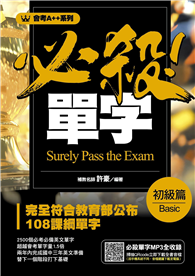Terror in the Forest City. Bombs blowing up streetcars crowded with passengers. Trolley crews stoned and beaten. Thousands of Clevelanders-men, women and children--rioting day and night in the streets. Policemen and soldiers desperately battling lynch mobs all over the East, West and South Sides. Gut-toting strikebreakers shooting it out in the streets with equally armed strike sympathizers. Welcome to Cleveland in the summer of 1899. Cleveland history is like an enormous North Atlantic iceberg: what its citizens choose to remember is probably less than a tenth of what has been forgotten or suppressed. And so it is with the story of the Great Streetcar Strike of 1899, Cleveland's most terrible episode of outright class warfare. Although long lost in a fog of civic amnesia, the Great Streetcar Strike was the greatest civic upheaval in the city's history, both in terms of its duration and for the proportion of its citizens involved in mass-participation law-breaking. Never before or since has the city witnessed so prolonged and desperate a labor conflict, or been so divided in its loyalties to the warring parties. On one side: the Cleveland Electric Railway Company ("The Big Con"), led by tough traction magnate Henry Everett and backed up by a force of half a thousand armed strikebreakers, hired detectives, the Cleveland police and the state militia. On the other: the Big Con's 800 newly unionized conductors and motorman and the tens of thousands of Forest City citizens sympathetic to the strikers and willing to commit violence on their behalf. To the Bitter End is the story of their epic combat as it was fought out in the city streets, newspapers and pulpits throughout the summer and fall of 1899. A tale of sacrifice and mayhem, ruthlessness and loss, The Great Streetcar Strike was, truly, a working-class insurrection that touched the life of every Clevelander at the turn of the 20th century and continues to reverberate today.
| FindBook |
有 1 項符合
To the Bitter End: The 1899 Cleveland Streetcar Strike的圖書 |
 |
To the Bitter End: The 1899 Cleveland Streetcar Strike 作者:Bellamy 出版社:Createspace Independent Publishing Platform 出版日期:2015-03-27 語言:英文 規格:平裝 / 576頁 / 22.9 x 15.2 x 3 cm / 普通級 |
| 圖書館借閱 |
| 國家圖書館 | 全國圖書書目資訊網 | 國立公共資訊圖書館 | 電子書服務平台 | MetaCat 跨館整合查詢 |
| 臺北市立圖書館 | 新北市立圖書館 | 基隆市公共圖書館 | 桃園市立圖書館 | 新竹縣公共圖書館 |
| 苗栗縣立圖書館 | 臺中市立圖書館 | 彰化縣公共圖書館 | 南投縣文化局 | 雲林縣公共圖書館 |
| 嘉義縣圖書館 | 臺南市立圖書館 | 高雄市立圖書館 | 屏東縣公共圖書館 | 宜蘭縣公共圖書館 |
| 花蓮縣文化局 | 臺東縣文化處 |
|
|
圖書介紹 - 資料來源:博客來 評分:
圖書名稱:To the Bitter End: The 1899 Cleveland Streetcar Strike
內容簡介
作者簡介
John Stark Bellamy II is the author of numerous books about Cleveland crime and disaster, including They Died Crawling, The Maniac in the Bushes, Death Ride at Euclid Beach, Women Behaving Badly and The Last Days of Cleveland. His other titles include Vintage Vermont Villainies, A Woman Scorned: The Murder of George Saxton, and One Man’s Mirror, an anthology of the writings of legendary Cleveland journalist S. J. Kelly.
|











